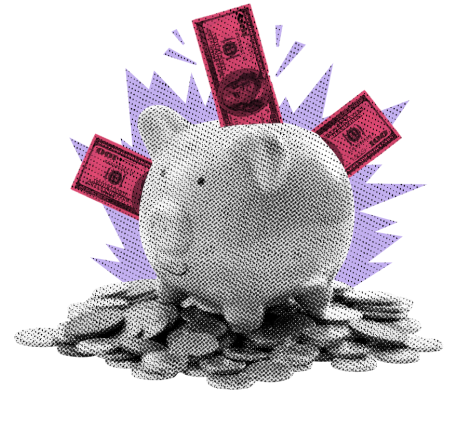
A market-savvy breakdown of term premium, the 10-year yield, and what rising uncertainty means for investors.
KEY TAKEAWAYS
-
Planning for the distant future is inherently uncertain.
-
Risk premium compensates for borrower-specific credit risk.
-
Term premium compensates for time-related uncertainty.
-
The Fed’s ACM model helps estimate expected rate paths.
-
Rising term premium reflects market uncertainty, not just Fed policy.
MY HOT TAKES
-
Time is the most expensive risk of all.
-
Mortgage relief won’t come just from Fed cuts–term premiums matter more.
-
Bond markets price uncertainty more honestly than politicians do.
-
Rising term premium is a flashing yellow light for stability seekers.
-
Planning dinner may be uncertain–planning the next decade is chaos.
-
You can quote me: “The bond market is quietly screaming that the future looks messy.”
Cloudy with a chance of who-knows. I used to joke about my family's long-term planning, which was like my wife asking me “what shall we do for dinner”... at around 7:30 PM, way past dinnertime for most folks. Or, planning travel literally days before heading to the airport for an overseas jaunt. It’s true, however, that was when our kids were younger and our lives were far more complicated. We had to contend with conflicting work schedules, school schedules, family obligations, holidays, sports schedules… finance. How could we possibly know if some random date 1 year from now would be the ideal date to check out and disappear for a weeklong journey across the globe given all those potential complications? Did I mention weather? Would we be stuck in a hotel room watching the tiki bar float away along with our dreams of fun in the sun?
Do you know where the economy will be in 1 year? How about 5 years? You think you got this? How about 10 years from now? I have been doing this for a long time, and I can tell you with 100% certainty that I have no clue exactly where the economy will be in 5 or 10 years. To be clear, I have an idea, but I have far more confidence in my estimates over the next 2 or 3 years, but with decreasing confidence over time. Does that sound fair?
What if you were to lend money to a friend and they promised to pay you back in 1 year? You would look them up and down, assess the state of the economy, consider their earnings prospects, maybe check into their history. You would ultimately think, “what can go wrong in 1 year?” Then, based on that, you would set a rate to compensate for taking that risk for a year. Because it’s only 1 year, it is not difficult to estimate the possible risks. You look at the US Treasury yield curve and see that yields for a 1-year Treasury Bill is around 3.8%. That is the lowest-risk rate available for that maturity, so you tack on a risk premium based on your friend’s credit worthiness and you are off to the races. Let’s say, you agree to loan your friend the money for 4.8%.
That is a simple but very real example that most of us understand well. That last bit of tacking on an additional 1% was the concept of risk premium. Higher risk investments demand high premiums. That is why when a broker calls you and offers you an investment opportunity with yields that far exceed a Treasury yield of similar maturity, your first question should be “why is the spread so wide,” knowing that you are being compensated for some type of risk.
I am pretty confident that my faithful followers (I love you all) all understand that concept, but this morning I want to zero in on the notion I introduced up top: term premium. Remember that loan to your friend? We established a rate based on a risk-free yield plus a risk premium. What if the same friend promised to pay you back in 10 years? Your first thought should be “wow, so much can happen in 10-years!” Clearly, you should be compensated for that added time risk. So, exactly how much should you be compensated for taking on that additional time horizon risk?
Well, we can look at the Treasury market and see that 10-year Treasury Note yields are around 4.28%, around 48 basis points, or 0.48% higher than the 1-year Treasury Bill yields. Ok, now take a breath and focus. That 48 basis points is technically not a term premium. Be patient, I will explain. Oh, then I will ultimately tell you why I am being so picky about this. The mathematical formula for Term premium is:
Term Premium = Long-term yield - Expected short-rate path
In that expression, Expected short-rate path is the average of where we expect the Fed to set overnight rates (Fed Funds Rate) over the term until maturity. Is it going lower or higher, and on average, by how much? I am sure that you have an idea, and I often tell you probabilities based on Futures. Of course, the Fed gives us its infamous Dot Plot, so we know where they think it is going to be. But how do we turn that into an actionable number? Not so easy, eh? Well, fortunately there is some help.
Enter the New York Fed’s Adrian-Crump-Moench (ACM) model. The model’s namesakes created a multi-factor statistical model of the yield curve which fairly accurately comes up with that Expected short-rate path. I won’t get into the math with you because I don’t have to, you can simply look up the number on the NY Fed’s website. You know what, you don’t even have to do that, because I will tell you the current 10-year risk-neutral ACM fitted yield is 3.48%. Remember, that number is based on an estimate of what the Fed is going to do. If we compare that to the actual 10-year Treasury yield (4.28%), we can calculate our term premium (remember the formula ☝️), which is around 80 basis points.
So, we now know that 80 basis points of that 10-year yield is attributed to the time-based risk of lending your money out for 10-years. The number alone tells us very little as market observers, however its trend can certainly help give us some more color. Take a look at the following chart and follow me to the quick finish.

This chart shows the ACM Term Premium since the start of 2024. You can see how it increased late in ‘24 and then jumped higher yet in April of this year. If you have been following me, you would observe that, independent of what the Fed is going to do with interest rates, 10-year yields–the yields on which mortgage rates are based–have factored in an increasing amount of term risk.
A rising term premium signals that investors see the future as riskier and want extra yield for holding longer-dated bonds. That reflects macro risks like sticky inflation or growth volatility, policy credibility concerns around the Fed, supply and demand pressures from heavy Treasury issuance or weak foreign demand, and geopolitical noise from military tension or tariff battles. In short, it’s the bond market’s way of pricing in uncertainty beyond just the Fed’s expected rate path. It would therefore seem that, beyond looking to the Fed (though you know that it too impacts yields) for lower mortgage rates, focusing on stability and minimizing Treasury issuance might be impactful as well. The chart tells you the whole story.
We have gotten better at planning dinners now that we are empty-nesters; the menu is planned by at least 5:30 PM. 🤣 We locked in our final travel plans for last week’s international travel with my 3 adult children at least 1 month prior (a huge accomplishment 🏆), though we were actually planning it for the entire year before. I have a pretty good idea about what I am going to have for breakfast, no clue about dinner, and travel–let’s just say that we don’t need to worry about that for another few months. If you want to borrow money from me for 10-years however, you are going to have to pay me a higher premium today than you would have just 1 year ago.
YESTERDAY’S MARKETS
Stocks took an interesting round-trip ultimately closing in the red as Treasury yields climbed reflecting increased future risk and uncertainty around the Fed, tariffs, and policy. Manufacturing PMIs came in lower than expected. 🙃 The dollar gained and so did cryptos.

NEXT UP
-
JOLTS Job Openings (July) is expected to show 7.382 million vacancies, slightly less than June’s 7.437 million openings.
-
Factory Orders (July) may have slipped by -1.3% after falling by -4.8% in June. Don’t miss this, it can be tied to tariff impacts.
-
Fed Beige Book comes out at 2:00 Wall Street time. It will give us some anecdotal information on economic health around the country. This is a sleeper release, but the Fed often cites it in its policy decisions, so the message is, don’t sleep on it.
-
St. Louis Fed President Alberto Musalem will speak today. He is an FOMC voting member and a known hawk.
-
Important earnings today: Dollar Tree, Macy’s, Campbells, C3.ai, Salesforce, Hewlett Packard Enterprise, American Eagle Outfitters, Figma, and Gitlab.
.png)

